What's the difference between an induction stove and a glass ceramic stove: description of technical specifications and a review of popular models
 Choosing a stove in the kitchen, a person can not always understand what characterizes the induction stove, what is its principle of operation and how it differs from the glass-ceramic hob, working on electricity, because the appearance of both of these devices is very similar.
Choosing a stove in the kitchen, a person can not always understand what characterizes the induction stove, what is its principle of operation and how it differs from the glass-ceramic hob, working on electricity, because the appearance of both of these devices is very similar.
In this article we will consider in detail each type of modern equipment for cooking, we will study the advantages and disadvantages, and we will conclude which option of the device will be the best solution for a large and small kitchen.
Contents
Induction hob
Description
The induction stove is the most advanced cooking equipment based on heating of metal cookware by an induced eddy current, which is produced from a high-frequency magnetic field.
The heat in this process is directed directly into the pot or pan.
The induction hob is externally similar to a glass ceramic hob device.
The important difference - the innovative hob has no heating elements, their function is performed by the bottoms of cookware with ferromagnetic properties.
The cooking surface of such stoves is multifunctional, for example, it has a rapid heating burner, a "booster" function (the transfer of power from one column to another), an audible timer and other options.
Working Principle
The principle of operation of induction models is based on the phenomenon of electromagnetic induction, which was discovered by English physicist M. Faraday in the early 19th century.
The induction stove is a portable transformer. Under its glass-ceramic surface there is an induction coil with a winding of copper, through which an electric current flows, with a frequency of 20-60 kHz.
The current is transformed into electromagnetic fields and generates already induction currents, which make the electronic particles of the bottom of the cookware (the conductor with a closed circuit) move and heat up.
Types of stoves
There are several types of hobs with an induction cooktop:
- Stove made together with an oven.
- Combination hob - two burners on the product are powered by electricity, two - on the principle of induction.
- Recessed cooktop. A convenient option for a small kitchen, under it you can install special drawers for storing dishes.
- Tabletop Cooker. A convenient option for the country house, on the road or for one person.
Advantages and disadvantages
Pros
- high cooking speed, thanks to the rapid heating of the bottom of the cookware, not the hob;
- Economical use of electricity;
- During cooking, the air in the kitchen is almost not heated;
- high safety of the device, thanks to the automatic switching on and off of the stove when you put or remove a pot on it;
- minimum risk of burns thanks to the cold edge of the burner;
- the surface is easy to clean as dirt, food and grease do not burn and do not create smoke - wiping with a wet sponge or cloth is sufficient;
- instant temperature change to within a degree;
- the hob adapts to the bottom of the cookware and heats it to the desired temperature;
- The hob will not work if you put a dish smaller than 12 cm in diameter on it, so it will not turn on if you accidentally hit it with a spoon or other object;
- The device is equipped with many important programs that make life easier for housewives - boiling water, stewing vegetables, etc.
Disadvantages
- high cost of the device - you have to pay a lot for good functionality and convenience;
- it is necessary to use special cookware with a bottom having ferromagnetic properties - it will ensure economy, safety and efficiency (the bottom can be checked with an ordinary magnet);
- the glass ceramic surface is very fragile, it is important to avoid accidental pitting to avoid cracks and chips;
- the stove must not be cleaned with abrasive powders and hard sponges;
- noise is heard during operation - humming or buzzing;
- Induction hob cannot be installed near other household appliances (washing machine, dishwasher, oven), because it can adversely affect their operation.
Ceramic hob
Description
Glass-ceramic kitchen appliances are a type of electric stove. The glass ceramic hob is made of a special material - ceran, which has high strength and the ability to withstand any force.
The glass ceramic hob is characterized by its mirror-like and perfectly smooth surface, on which the electric burners of two types are located:
- usual;
- double-circuit - created to control the level of heating, depending on the size of dishes.
In addition to heating elements, the stove is equipped with an oven.
Working principle
The main working elements of the glass ceramic stove are heated instantly with a tubular electric heater. From him, through the glass surface, the heat flows, which heats the dishes.
Halogen burners with heat-emitting bulbs or the most modern Hi Light burners are installed on the glass ceramic hob - they are heated by a specially fused band in the form of a snake.
The principle of operation of such a stove is similar to the performance of an ordinary stove with cast-iron pancakes. The heating element itself increases the heat and conducts it to the skillet or pot.
Types
Stoves made of glass ceramic are distinguished by the variety of burners.
They come in three types:
- Burners with a heating element in the form of a halogen bulb - They heat up in 3 seconds, are powerful, but do not last long;
- burners of rapide type - heated in 12 seconds, the role of the heating element plays a spiral with high resistance. An improved version of such modern burners - Hi Light, they are able to heat up in 7 seconds;
- burners of induction type - heating is instantaneous, and the electricity is carefully saved. However, the price of stoves with this type of burners is very high.
Advantages and disadvantages
Pros
- Vertical thermal conductivity, due to which the heat energy falls only on the bottom of the cookware and not on the entire cooking surface. The glass ceramic hob can withstand heat up to 600 degrees;
- Fast cooling of the hob - by changing the position of the switch you can adjust the desired temperature of the heating element;
- different temperature modes of burners for cooking;
- economical consumption of electricity, because the heating elements are adapted to the different diameters of pans;
- The function of controlling the boiling water - greatly reduces the likelihood of contamination;
- Ovens are equipped with lights, ventilation, heating sensors, grill and rotisserie, a self-cleaning steam system;
- childproofing, locking access to the hob controls;
- high durability of the cooking surface, thanks to the material - ceran;
- the possibility of using original forms of cookware (duck-bowl, cauldron, etc.);
- Smooth mirrored surface of the hob perfectly fits into the kitchen set and ennobles it.
Disadvantages
- many models require the use of cookware made of certain materials, preferably with a flat, thick and matte bottom (ceramic, glass, aluminum and copper cookware are not suitable);
- Difficulty in care - to clean the hob is necessary with a special tool - a scraper with a thin blade, and expensive household chemicals designed specifically for glass ceramics, otherwise you can provoke oxidation and the formation of micro-scratches;
- point and excessive loads on the surface are contraindicated;
- Due to the low rim, run-off milk or soup can drip onto the floor;
- the glass-ceramic stove must not be stained with sugar products, as it is practically impossible to remove such stains;
- these models are contraindicated sharp temperature changes, as it puts the appliances out of order.
Comparison of induction and glass ceramic stoves
| Features | Induction Cooker | Glass ceramic hob |
| Suitable cookware | Special pots with flat bottom and ferromagnetic properties | Cookware in completely different shapes; old cookware cannot be used |
| Speed of heating | Virtually instantaneous | Few minutes |
| EFFICIENCY | Approximately 90% | Approximately 60% |
| Economy | Uses less electricity, costs less | Uses more electricity |
| Safety | The hob is safe for children and animals, not recommended for people with pacemakers | Less dangerous than a gas hob, but there is a risk of burns |
| Noise | Pretty quiet noises, humming | Silent |
| Care | Liquids and food are easily removed with a damp cloth | Contaminants are easily removed, except for sugar food |
| Controls | Automatic on, touch control | Mechanical or touch-sensor switching and control |
The conclusion is as follows: when trying to save money on kitchen equipment, it is better to give preference to a glass-ceramic stove..
However, if you want to save time and effort, it is better to choose an induction cooker, because it cooks faster and is easier to clean. Also, the induction hob is good in that it consumes much less electricity, as it heats up faster and have the function of automatic temperature control burners.
But the big plus of the glass-ceramic hob is its absolutely silent operation, which cannot be said about its opponent.
The choice is always up to the buyer: expensive, but the most modern product, freeing up time for personal affairs of the owner; or a device in the middle price segment, but causing some discomfort in care and operation.
Both the glass ceramic hob and the device that works on the principle of induction can save space in a small kitchen, because it can be built into the furniture or placed on the worktop.
Top 5 induction hobs
Hansa BHI68300
Electric induction hob in a stylish, minimalist, black design. 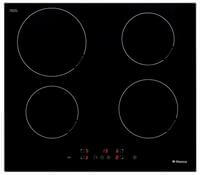
The equipment is very powerful and heats up instantly.
Technical specifications:
- Surface type - electric hob;
- location - independent;
- dimensions - 60*50 cm;
- power - 7 kW;
- material of the panel - glass ceramic;
- the number of burners - 4;
- control - touch, buttons;
- timer - yes;
- hob lock - yes;
- residual heat indicator - yes;
- color - black.
Pros of
- intuitive control;
- good power;
- stylish appearance;
- child lock;
- audible timer.
Disadvantages
- All burners stop working in case of automatic shutdown;
- there is an unpleasant smell when working.
Electrolux EHF 96547 XK
Multifunctional induction stove: boiling, shut off during spillage 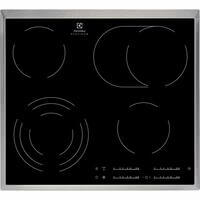
Heating elements have many options, and the hob itself can be put anywhere and even built into a set.
Technical characteristics:
- type of surface - electric cooktop;
- arrangement - independent;
- The dimensions - 57,6 * 51,6 cm;
- power - 7,1 kW;
- material of the panel - glass ceramic;
- Number of burners - 4;
- Number of Hi Light burners - 4;
- Number of three-circuit burners - 1;
- Number of burners with oval heating zone - 1;
- control - sensor, slider;
- timer - yes, sound timer;
- hob lock - yes;
- Residual heat indicator - yes;
- shade - black with silver.
Pros of
- easy care;
- excellent quality-price ratio;
- a lot of options;
- clear control.
Cons
- the black color is very dirty;
- short power cord;
- high power consumption.
Bosch PIE631FB1E.
The German induction stove has convenient buttons on the touchpad, the 
The device informs you when cooking is complete and locks the hob from animals and children.
Technical characteristics:
- Type of surface - electric cooktop;
- location - independent;
- The dimensions - 59,2 * 52,2 cm;
- power - 7,4 kW;
- material of the panel - glass ceramic;
- the number of burners - 4;
- control - touch, buttons;
- timer - yes, with sound;
- hob lock - yes;
- indicator of the residual heat - yes;
- color - black.
Pros of
- there is Boost mode - instant water boiling;
- uniform heating in all modes;
- sound alert;
- beautiful design.
Disadvantages
- the surface is easily scratched;
- there is a little noise in Boost mode.
Fornelli PGA 45 Fiero
The stove is made in tempered glass.. The arsenal includes a BOC burner with a triple flame 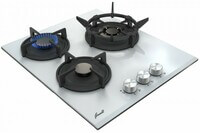
Flat bottoms as well as spherical bottoms are suitable for the burners.
Technical characteristics:
- type of surface - gas cooktop;
- arrangement - independent;
- The dimensions - 45*51 cm;
- material of the panel - tempered glass;
- the number of burners - 3;
- control - rotary;
- timer - yes;
- color - black.
Pros of
- compactness;
- turbo burner works well;
- easy care.
Cons
- handles are not of high quality;
- The ignition may not work.
Hotpoint-Ariston IKIA 640 C
Induction stove with automatic cookware recognition function. Sound timer 
The stove saves electricity, because it heats up almost immediately when you turn it on.
Technical characteristics:
- Type of surface - electric hob;
- location - independent;
- The dimensions - 59*51 cm;
- Power - 7 kW;
- material of the panel - glass ceramic;
- the number of burners - 4;
- control - touch, buttons;
- timer - yes;
- hob lock - yes;
- indicator of the residual heat - yes;
- color - black.
Pros of
- touch panel for control;
- high-quality material of the hob;
- almost noiseless operation
- aristocratic stylish design.
Cons
- The induction hob often gets dirty, you have to wipe with a damp cloth after each use.
Useful Video
Watch this video to find out the differences between induction hobs and glass ceramic hobs:



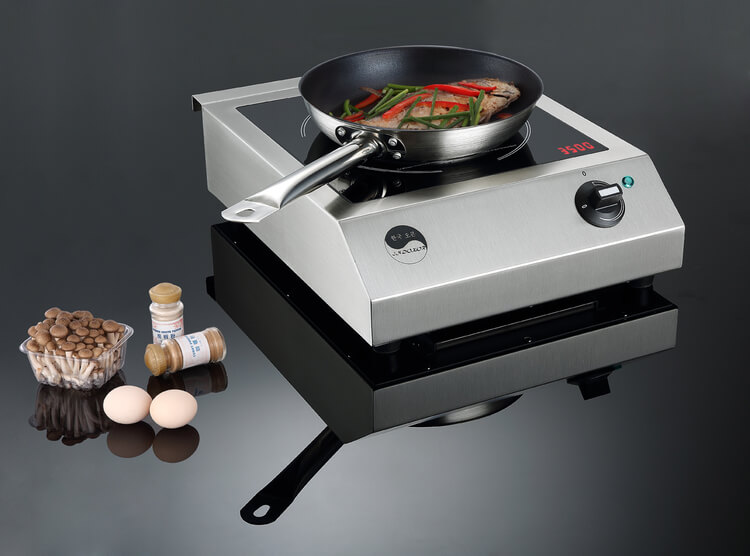
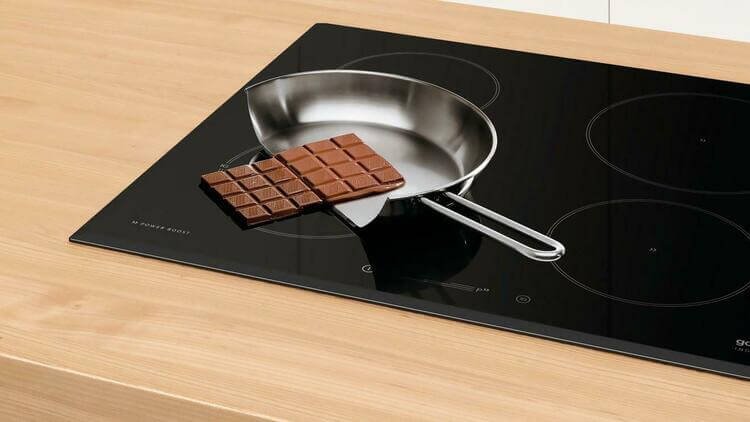
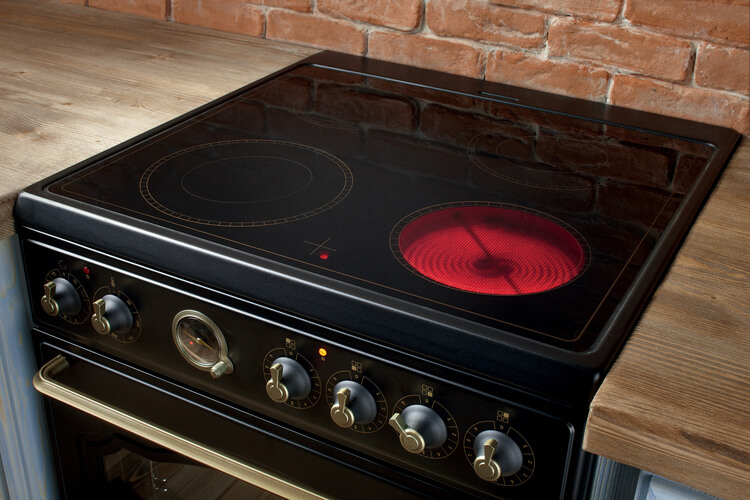
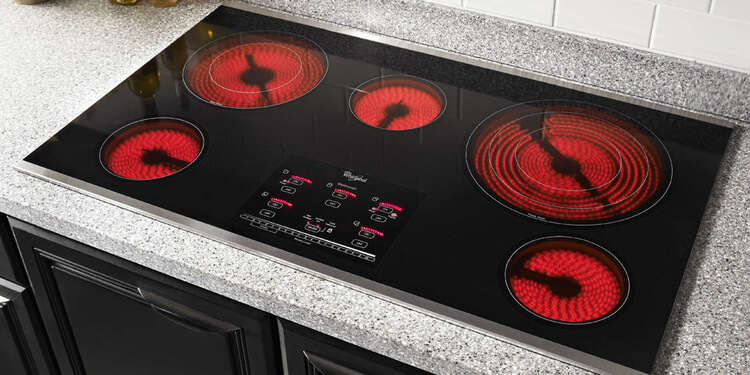
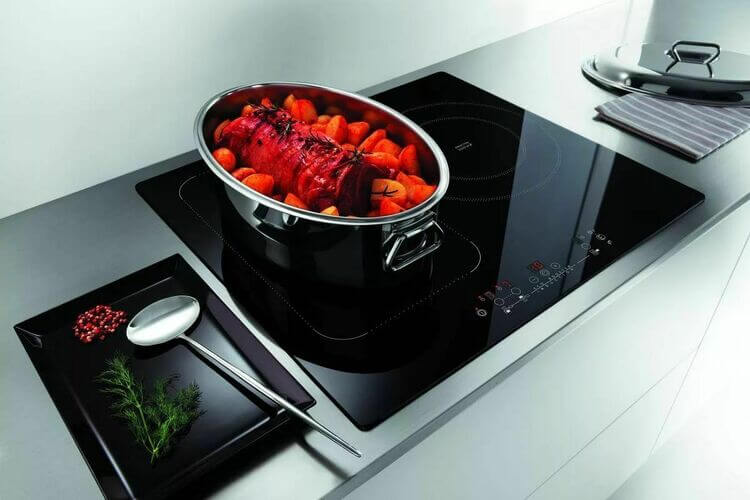
I don't know, all those downsides you described aren't that bad. I also have a Hotpoint-Ariston, I do not think that straight expensive for me, especially since this stove is much more convenient and functional
I liked the glass ceramic stove option. Only embarrassed by the number of cited disadvantages. It is clear that there are always minuses, especially in technology. The question is to what extent they spoil the overall picture of using such a stove.
You know, I would not say that the induction stove has any high cost, I bought my Indesit even at an affordable price and I'm happy.
I don't agree that induction gets dirty more often. I have a turntable induction. The surface is fine, not stubborn. No streaks, dirt or fingerprints are not really visible.
I had a glass ceramic hob, now I have induction. Both are great, induction is a little noisy, but heats faster.
But the dishes are sly, for some reason no one is even trying to hide it. After all, you can cook on an induction stove in an enamel pot and a cast-iron frying pan. Therefore, do not rush to write off their not yet old utensils in the trash. When buying an induction stove, the first thing I heard was: have you bought utensils for it yet?
We bought it a long time ago! Cast iron, it is eternal! And not all enamelled pots and pans have been thrown away yet. Only one disadvantage of induction - and not all - it does not see small dishes. I can't use a geyser coffee maker, although it was bought for the induction stove.
Hello! I have a glass ceramic stove from Finland, works for 20 years, I love it very much, but ... one small burner is working at full speed, does not switch to lower temperatures and the oven has one barrel is baked worse. I must change, but do not know what kind. I want a grill and a timer, and definitely a cool oven. I would like an induction oven, but I don't know what kind. It would be nice to have a white top. Please advise on what to buy. I bake often, why only one tray everywhere? With my sincere respect and wishes for health and good luck, my dear kids. Svetlana Kiyamovna.Sergiyenko